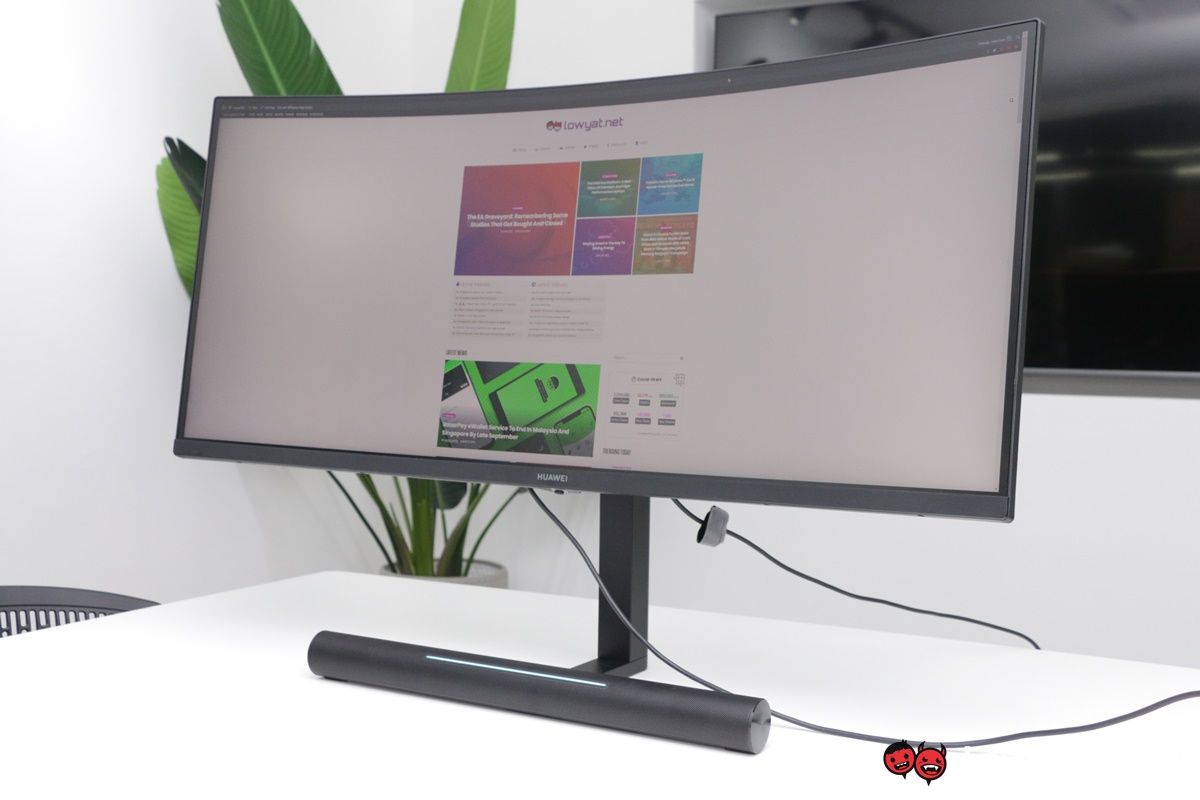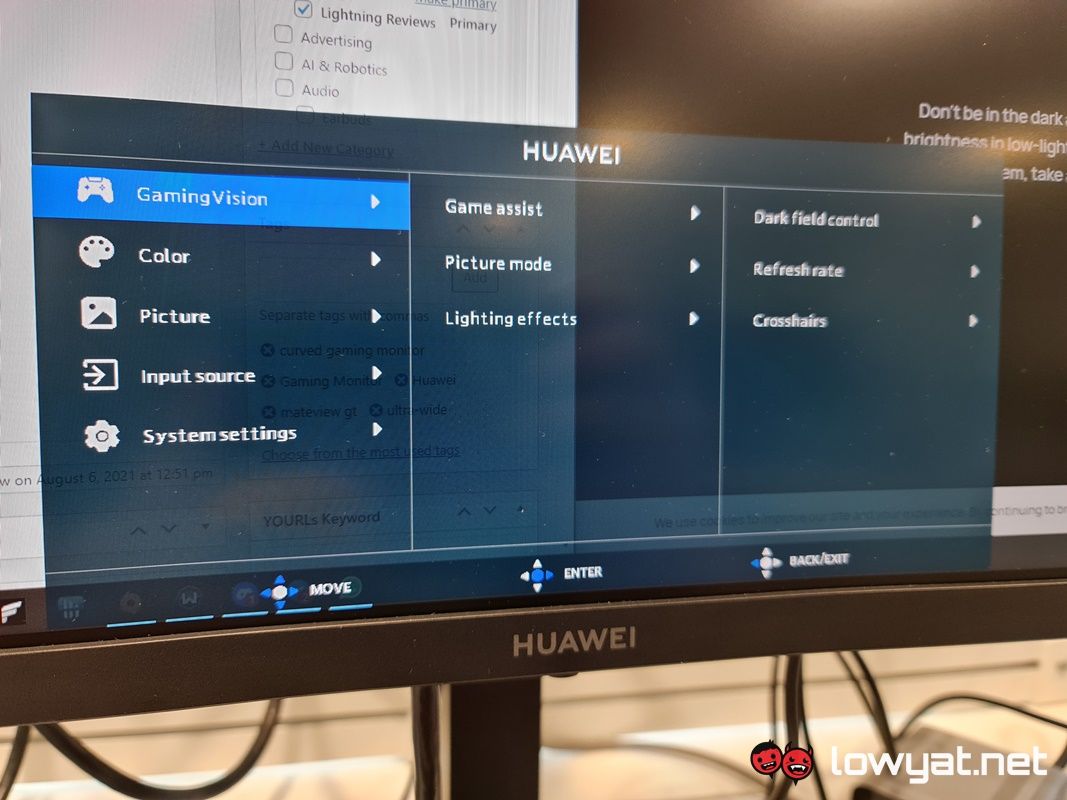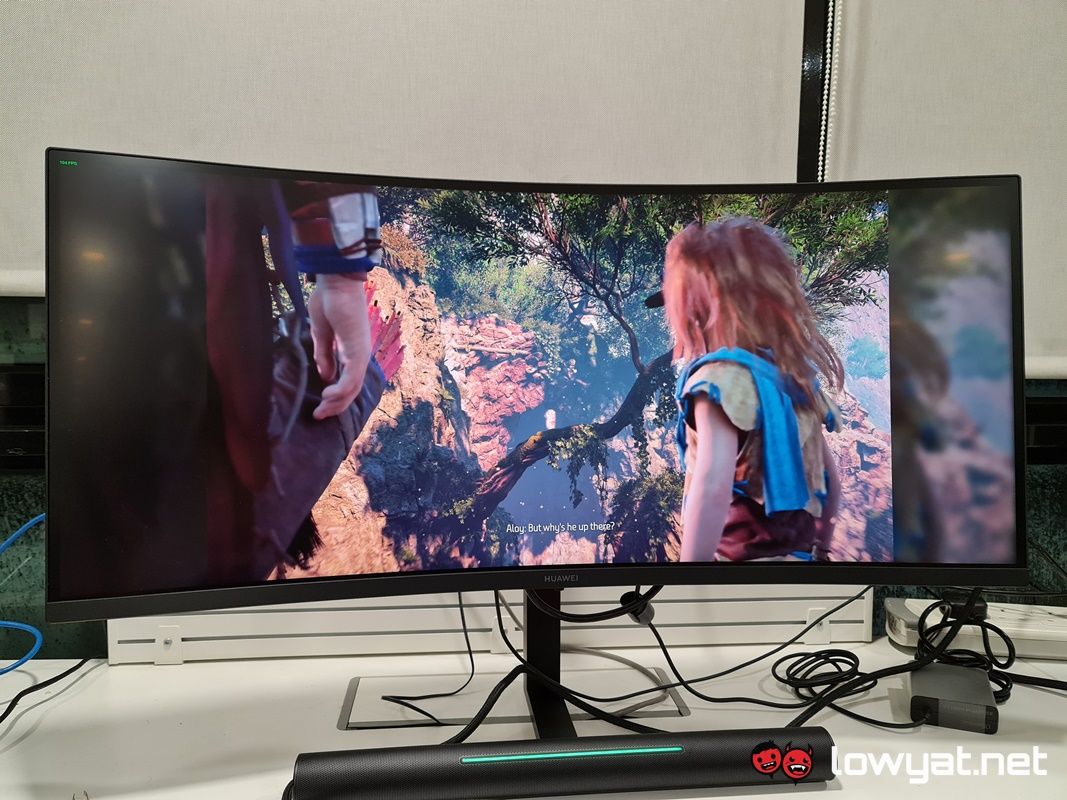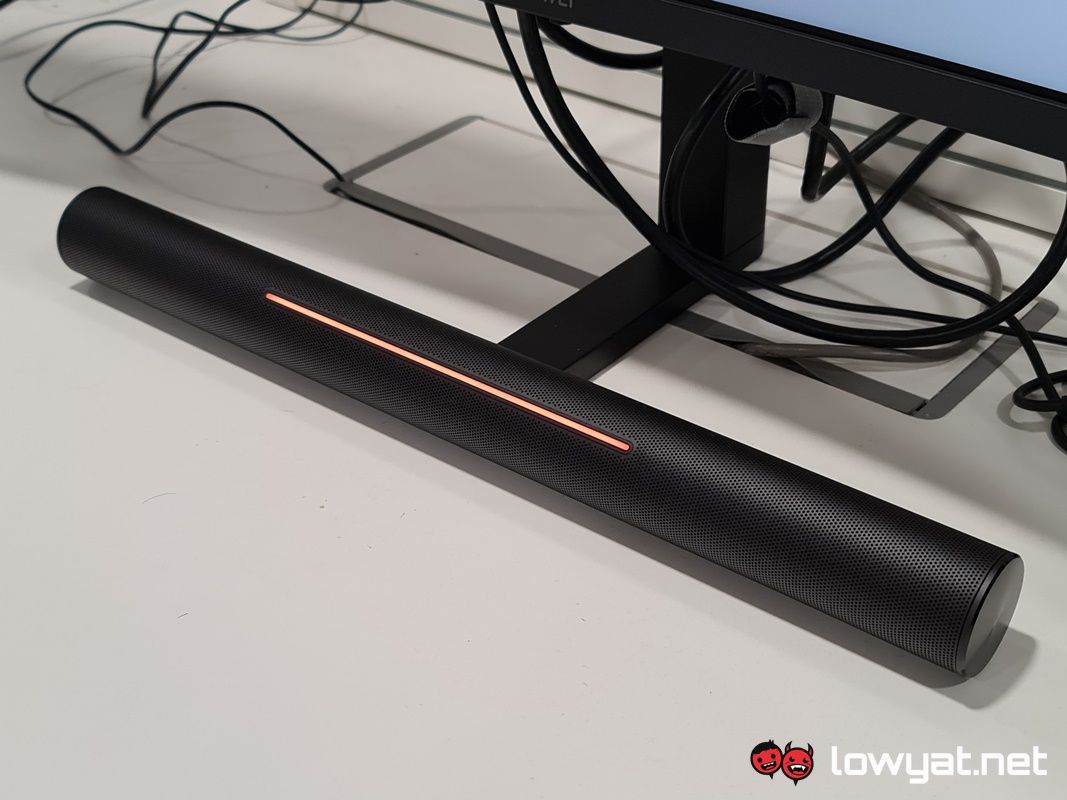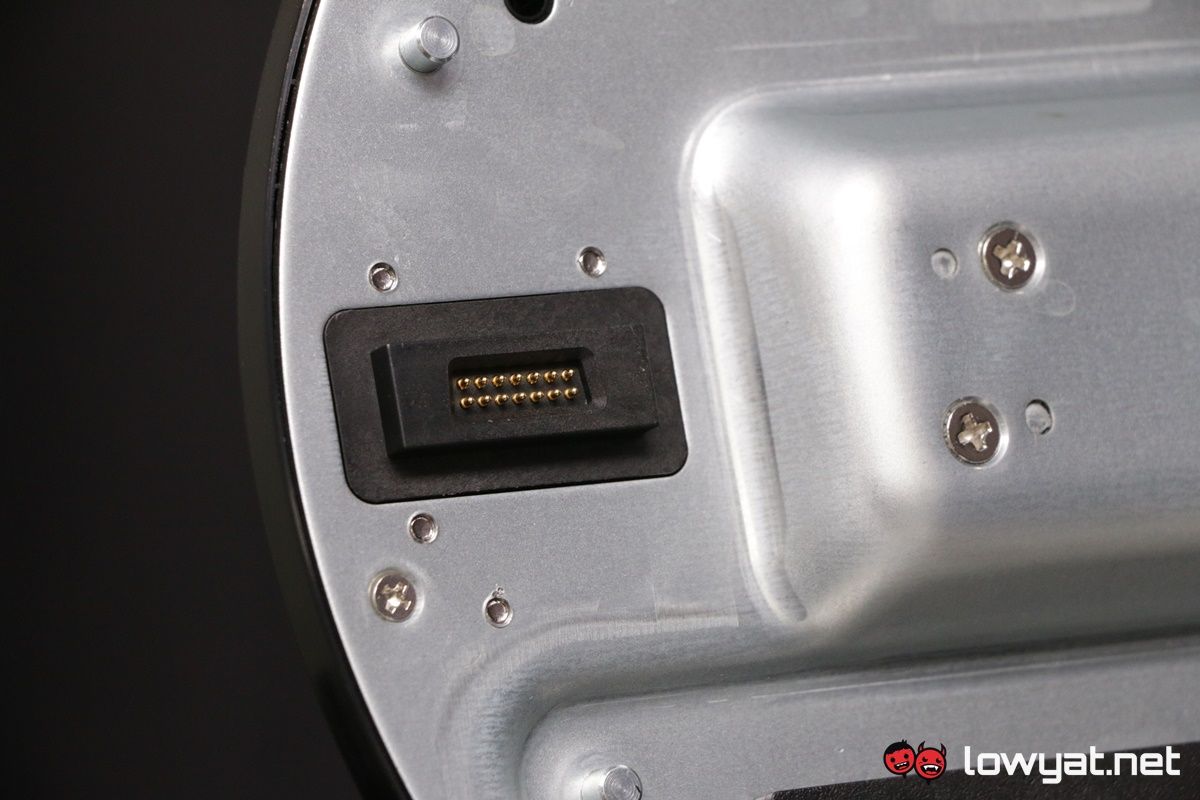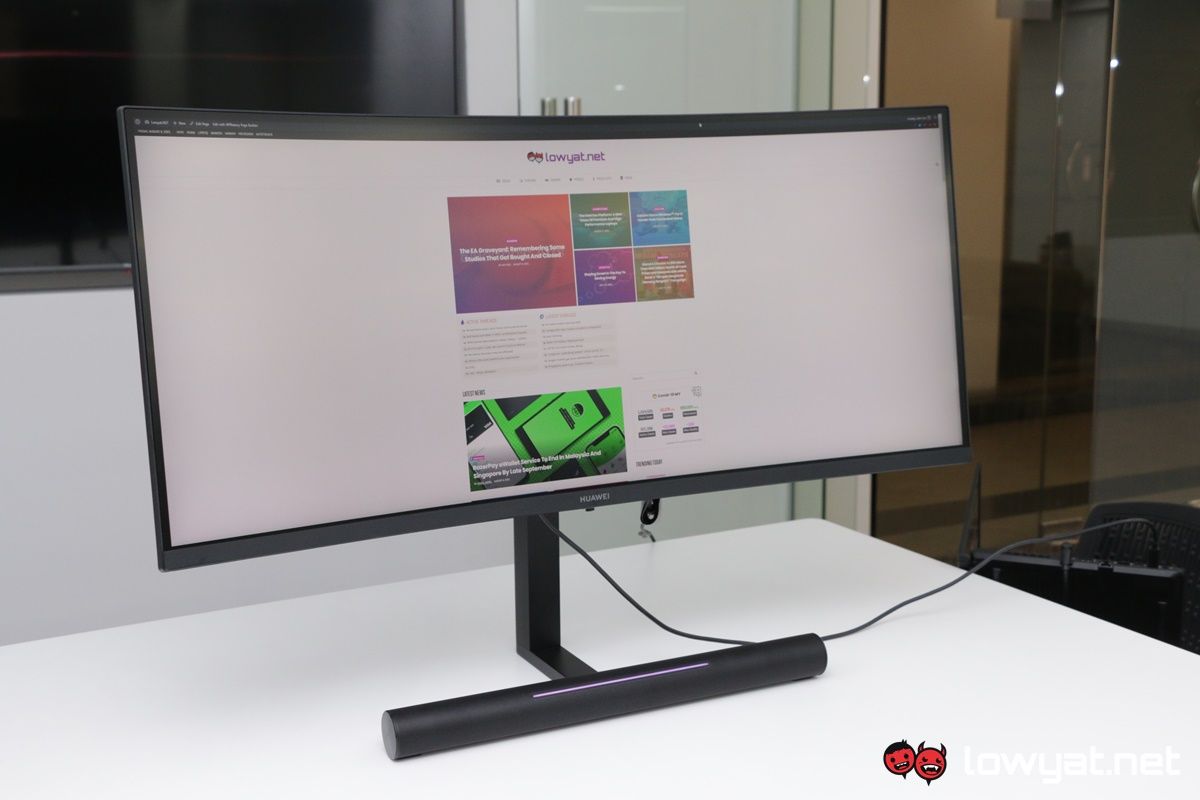With that, the main question that I will be addressing is this: does Huawei’s curved gaming monitor hit all the right notes, or is it a one-hit wonder?
What Is It?
Getting straight into it, the MateView GT Sound Edition is an ultra-wide curved gaming monitor and, as I mentioned at the start, a first for the brand. Specs-wise, its VA panel measures at 34-inches with a maximum resolution of 3440 x 1440 pixels (WQHD) and has a curvature rating of 1500R. Due to its ultra-wide nature, the aspect ratio of the MateView GT is set at 21:9, while its refresh rate goes as high as 165Hz. Moving on, the monitor also has a a 90% DCI-P3 colour gamut and 100% sRGB. Moreover, it is HDR10 certified but only has a maximum brightness of 350 nits, which is more or less the standard for monitors. On other appealing feature of the MateView GT is that the monitor has thin bezels both on its sides and the top, while the thicker bottom houses the monitor’s controls and brandishes the Huawei branding in the middle.
The base of the MateView GT is also unique, housing a built-in, dual-speaker 5W soundbar that is powered directly from the display, through the use of a pogo-pin style connector. Built into the back of the monitor. In addition, the soundbar comes with a touch control strip that in turn has a built-in RGB LED. Oh, and it also has built-in far-field microphones. Ports-wise, the MateView GT houses two USB-C ports – one port is entirely used to power up the monitor via the provided 135W adapter, while the other can be used to support data transfer, 10W charging, and display output – two HDMI 2.0 ports that support the monitor’s native resolution but only at a maximum refresh rate of 100Hz, one DisplayPort 1.4 port, and a 3.5 headphone and microphone jack combo.
Is It Any Good?
Unlike most curved gaming monitor, Huawei’s choice of 1500R for the MateView GT’s curvature is, at the very least sensible. Combined with the 165Hz refresh rate, gaming on the monitor it feels and looks fluid, thus actually making it enjoyable. The immersion is propelled a step further thanks, on no small part, to the display’s TUV Rheinland low blue light certification; staring at the screen over long periods doesn’t hurt my eyes. As for the VA panel, I am happy to tell you that it does not suffer from any washing out at the sides, bleeding from the edges, and minimal blooming around the mouse cursor. Further, at 3440 x 1440p, text and words turn out sharp and easy to read.
As always, because of the extra display real estate of the MateView GT, viewing multiple windows on it is a breath of fresh air, especially if you’re transitioning from a 16:9 display.
The Bad Stuff. Tell Me.
On-screen controls are as basic as they come; press in the joystick control, and you gain access to the MateView GT’s. Sadly, turning the monitor on and off is done through a less conventional method; you need to press and hold down the button for approximately three seconds to execute either function. Another issue that I have with the monitor is that, to my surprise, it isn’t AMD Freesync ready or even NVIDIA G-SYNC Compatible. However, it is only a small issue, given its already high refresh rate, but given the standard of gaming monitors today, I did expect it to at least support Freesync.
But perhaps, my biggest if not, greatest peeve with the MateView GT is its soundbar. I am fully aware that the built-in speaker is meant to serve as both a cost-effective and space-saving measure to a proper sound system, but it feels as if Huawei simply chose to slap it on at the last minute and call it a day. Audio-wise, it sounds flat across the board and on top of that, there is a hollow effect that trails behind it.
As for its range of sound, it is explicitly clear that the soundbar brings both its highs and mids far too forward while drowning out the lows, which are already virtually non-existent. It also doesn’t help that there are obvious signs of cracking with the highs and with the volume level set at 50% or higher, you begin to hear pops in the speakers. Yes,the maximum output of the soundbar is only 5W and I know I should manage my expectations, but at RM2488, I honestly expected something slightly more decent.
Should I Buy It?
At RM2488, the Huawei MateView GT Sound Edition is perhaps one of the more affordable ultra-wide, curved gaming monitors that have come into my hands and surprisingly, a decent first-try from Huawei as it tries to enter the gaming market. An absence of either AMD or NVIDIA’s anti-screen tearing technology and its less-than-stellar sounding soundbar, notwithstanding. If you can live with those two issues, though, then this monitor is definitely worth the consideration.
